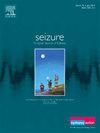Utilizing machine learning techniques for EEG assessment in the diagnosis of epileptic seizures in the brain: A systematic review and meta-analysis
IF 2.7
3区 医学
Q2 CLINICAL NEUROLOGY
引用次数: 0
Abstract
Purpose
Advancements in Machine Learning (ML) techniques have revolutionized diagnosing and monitoring epileptic seizures using Electroencephalogram (EEG) signals. This analysis aims to determine the effectiveness of ML techniques in recognizing patterns of epileptic seizures in the brain using EEG signals.
Methods
We searched PubMed, Scopus, and Google Scholar for relevant RCTs, cohort studies, and case-control studies involving patients with prior epileptic seizures who underwent EEG analysis aided by ML techniques. Using the STATA software, we evaluated the accuracy of predicting epileptic seizures, measured using metrics such as Area under the curve (AUC), Sensitivity, and Specificity.
Results
The random effects bivariate model of 4 studies with 214 patients revealed high diagnostic performance for ML techniques in detecting epileptic signals in EEGs. The estimated sensitivity was 0.97 (95 % CI: 0.92–0.99), indicating its ability to accurately detect the condition in 97 % of cases. Similarly, the estimated specificity was 0.99 (95 % CI: 0.98–0.99), demonstrating its ability to correctly identify the absence of the condition in 99 % of cases. There was also a high AUC (1.00, 95 % CI: 0.99–1.00), indicating ML techniques can distinguish epileptic seizures from no seizures in EEG signals 100 % of the time. These findings underscore the test's robust diagnostic utility in sensitivity and specificity. There was a significant between-study variability (heterogeneity) with a chi-square p-value <0.001 and an I2 value of 95 %. A bivariate box plot further confirmed the heterogeneity. Deek's test for publication bias showed a non-significant p-value (p = 0.06) indicating the absence of publication bias.
Conclusion
ML techniques can potentially enhance diagnostic accuracy in epilepsy detection, offering valuable insights into developing advanced diagnostic tools for clinical practice.
利用机器学习技术进行脑电图评估以诊断大脑癫痫发作:系统回顾和荟萃分析
目的机器学习(ML)技术的进步已经彻底改变了使用脑电图(EEG)信号诊断和监测癫痫发作的方法。本分析旨在确定ML技术在使用脑电图信号识别大脑癫痫发作模式方面的有效性。方法检索PubMed、Scopus和b谷歌Scholar,检索相关的随机对照试验、队列研究和病例对照研究,这些研究涉及有癫痫发作史的患者,并在ML技术的辅助下进行脑电图分析。使用STATA软件,我们评估了预测癫痫发作的准确性,使用曲线下面积(AUC)、敏感性和特异性等指标进行测量。结果4项研究214例患者的随机效应双变量模型显示ML技术在脑电图中检测癫痫信号具有较高的诊断效能。估计灵敏度为0.97 (95% CI: 0.92-0.99),表明其能够准确检测97%的病例。同样,估计特异性为0.99 (95% CI: 0.98-0.99),表明其能够在99%的病例中正确识别疾病的缺失。AUC也很高(1.00,95% CI: 0.99-1.00),表明ML技术在脑电图信号中可以100%区分癫痫发作和非癫痫发作。这些发现强调了该测试在敏感性和特异性方面的强大诊断效用。研究间存在显著的变异性(异质性),卡方p值<;0.001, I2值为95%。双变量箱形图进一步证实了异质性。Deek发表偏倚检验显示p值不显著(p = 0.06),表明不存在发表偏倚。结论ml技术有可能提高癫痫诊断的准确性,为开发先进的临床诊断工具提供有价值的见解。
本文章由计算机程序翻译,如有差异,请以英文原文为准。
求助全文
约1分钟内获得全文
求助全文
来源期刊

Seizure-European Journal of Epilepsy
医学-临床神经学
CiteScore
5.60
自引率
6.70%
发文量
231
审稿时长
34 days
期刊介绍:
Seizure - European Journal of Epilepsy is an international journal owned by Epilepsy Action (the largest member led epilepsy organisation in the UK). It provides a forum for papers on all topics related to epilepsy and seizure disorders.
 求助内容:
求助内容: 应助结果提醒方式:
应助结果提醒方式:


